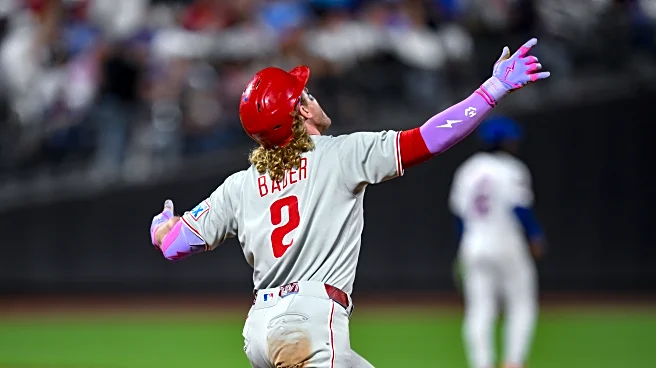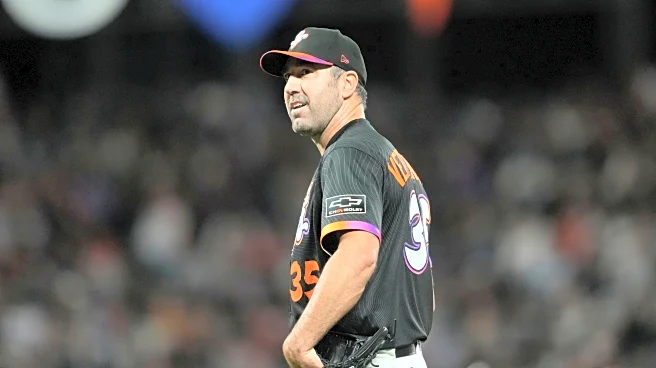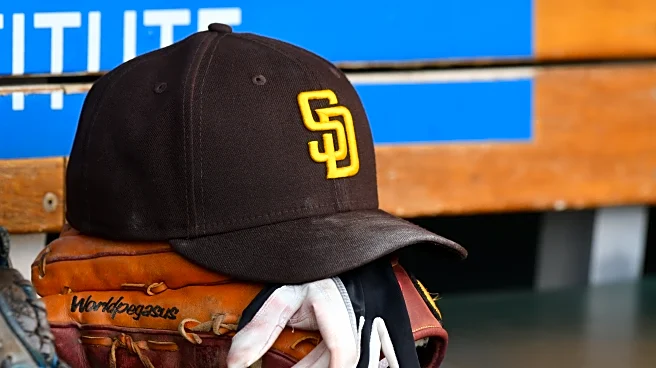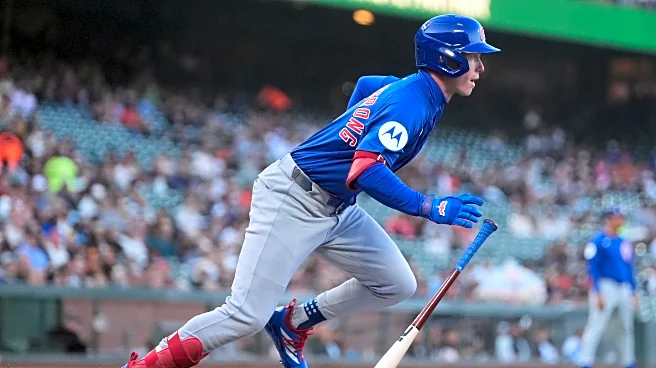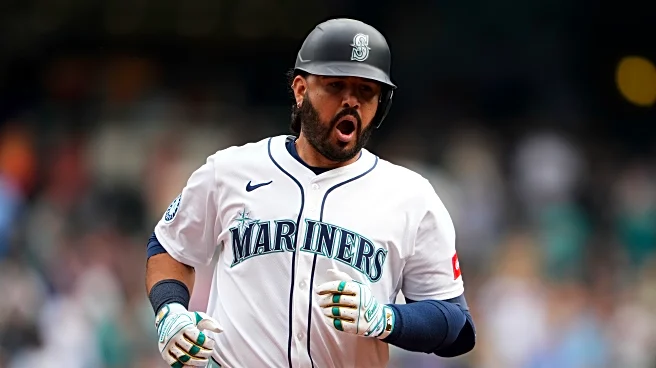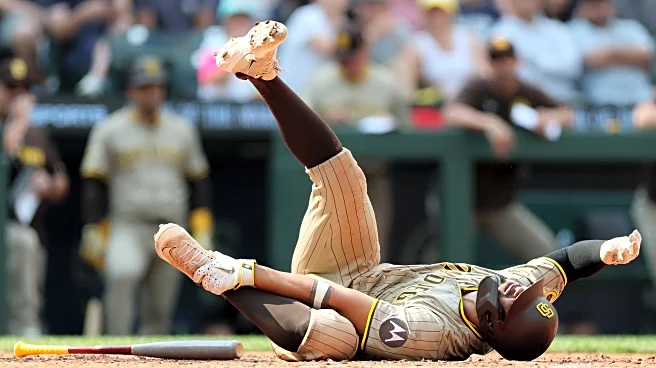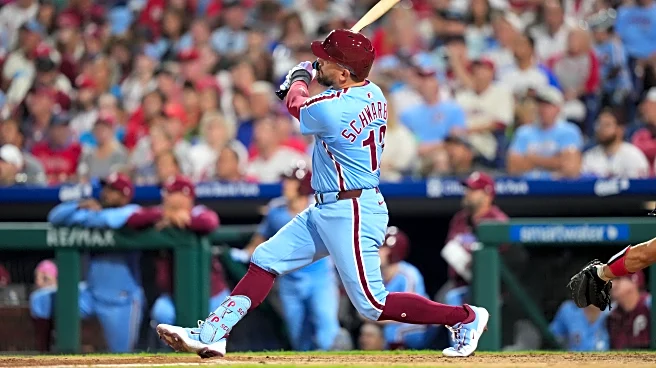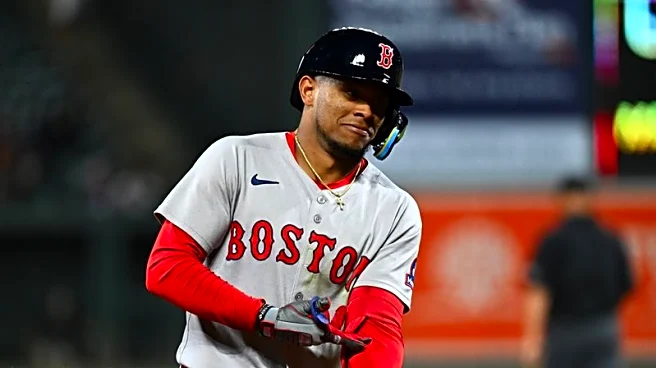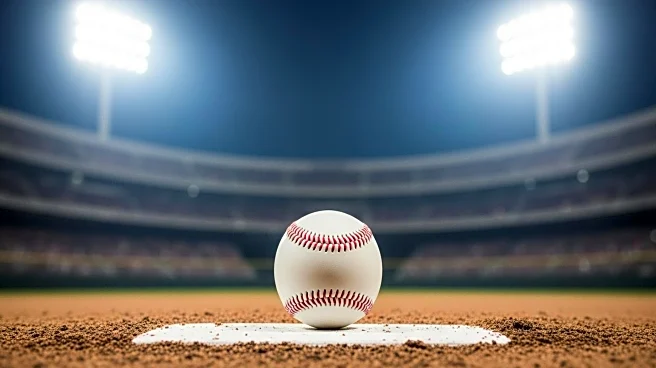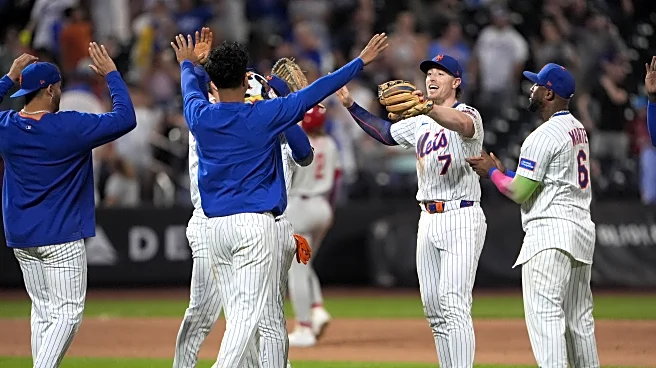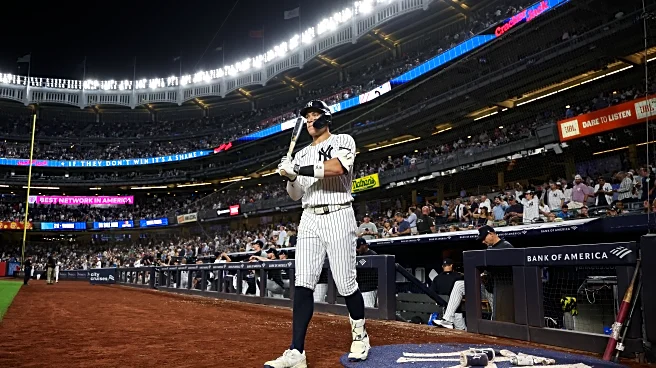What is the story about?
What's Happening?
Major League Baseball (MLB) hitters are swinging at first pitches at the highest rate since 1988, with a current league-wide swing percentage of 32.1%. This trend is led by players like Pete Crow-Armstrong, Bryce Harper, and Nick Castellanos, who are known for their aggressive approach at the plate. The increase in first-pitch swings is attributed to hitters being more prepared to hit good pitches early in the count, as pitchers aim to get ahead by reaching two strikes quickly. Mariners right-hander Bryan Woo and Blue Jays right-hander Kevin Gausman are among the top pitchers facing high first-pitch swing percentages, indicating a shift in batting strategies across the league.
Why It's Important?
The rise in first-pitch swinging reflects a strategic shift in MLB, where hitters are prioritizing early count opportunities to counteract pitchers' increasing velocity and varied pitch types. This change impacts game dynamics, potentially leading to higher batting averages and altering traditional approaches that emphasized patience and on-base percentage. Teams may need to adjust their scouting and pitching strategies to accommodate this aggressive batting style, influencing player development and game planning. The trend also highlights the evolving nature of baseball, as players and teams continuously adapt to new challenges and opportunities.
What's Next?
As the trend of first-pitch swinging continues, teams may focus on refining their pitching strategies to counteract aggressive hitters. This could involve developing pitches that are less predictable early in the count or enhancing defensive positioning to anticipate quick hits. Additionally, hitters may further refine their approach to maximize early count opportunities, potentially leading to changes in training and coaching methods. The ongoing adjustments between pitchers and hitters will likely continue to shape the strategic landscape of MLB.
Beyond the Headlines
The increase in first-pitch swinging may also influence the cultural aspects of baseball, as it challenges traditional notions of patience and strategy at the plate. This shift could lead to a reevaluation of player performance metrics, emphasizing immediate impact over long-term consistency. Moreover, the trend may affect fan engagement, as quicker, more dynamic at-bats could enhance the viewing experience, potentially attracting a broader audience to the sport.
AI Generated Content
Do you find this article useful?


